The George Cross (GC) is the highest award bestowed by the British government for non-operational gallantry or gallantry not in the presence of an enemy. In the British honours system, the George Cross, since its introduction in 1940, has been equal in stature to the Victoria Cross, the highest military gallantry award. It is awarded "for acts of the greatest heroism or for most conspicuous courage in circumstance of extreme danger", not in the presence of the enemy, to members of the British armed forces and to British civilians. Posthumous awards have been allowed since it was instituted. It was previously awarded to residents of Commonwealth countries, most of which have since established their own honours systems and no longer recommend British honours. It may be awarded to a person of any military rank in any service and to civilians including police, emergency services and merchant seamen. Many of the awards have been personally presented by the British monarch to recipients or, in the case of posthumous awards, to next of kin. The investitures are usually held at Buckingham Palace.
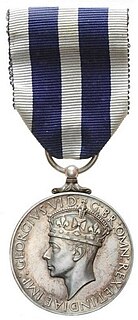
The King's Police Medal (KPM) is awarded to police in the United Kingdom for gallantry or distinguished service. It was also formerly awarded within the wider British Empire, including Commonwealth countries, most of which now have their own honours systems. The medal was established on 7 July 1909 as the King's Police Medal (KPM), initially inspired by the need to recognise the gallantry of the police officers involved in the Tottenham Outrage. Renamed the King's Police and Fire Services Medal (KPFSM) in 1940, it was replaced on 19 May 1954 by the Queen's Police Medal (QPM), when a separate Queen's Fire Service Medal was also instituted.
The Royal Victorian Medal (RVM) is a decoration established by Queen Victoria in April 1896. On 14 May 1912, King George V further confirmed the institution of the medal with an additional royal warrant. A part of the Royal Victorian Order, it is a reward for personal service to the Sovereign or the royal family, and is the personal gift of the sovereign. It differs from other grades of the order in appearance and in the way it is worn.

The King Edward VII Coronation Medal was a commemorative medal issued in 1902 to celebrate the coronation of King Edward VII and Queen Alexandra.

The King George V Coronation Medal was a commemorative medal instituted in 1911 to celebrate the coronation of King George V, that took place on 22 June 1911.
The King George VI Coronation Medal was a commemorative medal, instituted to celebrate the coronation of King George VI and Queen Elizabeth.

The Sea Gallantry Medal (SGM), is a United Kingdom award for civil gallantry at sea.
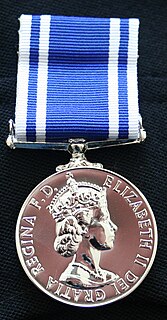
The Police Long Service and Good Conduct Medal is a decoration for police officers of the United Kingdom. First instituted in 1951, the medal is presented for twenty aggregate years of service in the police services of the United Kingdom.

The Diamond Jubilee Medal was instituted in 1897 by Royal Warrant as a British decoration. The medal was awarded to members of the Royal Family and the court, guests and dignitaries present at the celebrations of Queen Victoria's diamond jubilee and to selected soldiers and sailors who formed the jubilee parade in London.

The Golden Jubilee Medal was instituted in 1887 by Royal Warrant as a British decoration to be awarded to participants of Queen Victoria's golden jubilee celebrations.

The Royal Naval Volunteer Reserve Long Service and Good Conduct Medal, initially designated the Royal Naval Volunteer Reserve Long Service Medal, was instituted in 1908. It could be awarded to part-time ratings in the United Kingdom's Royal Naval Volunteer Reserve after twelve years of service and good conduct. The medal was a Naval version of the Volunteer Long Service Medal and its successor, the Territorial Force Efficiency Medal.

The Special Constabulary Long Service Medal is long service medal awarded in the United Kingdom to members of the Special Constabulary who have completed a specified period of service. Established in 1919 by King George V, the medal was initially created to reward members of the Special Constabulary for their service during World War I.
The Royal Ulster Constabulary Service Medal was a medal created to honour the service of members of the Royal Ulster Constabulary (RUC) and the RUC Reserve. Established in 1982 and first awarded in 1985, the medal ceased to be awarded when the RUC was replaced by the Police Service of Northern Ireland.
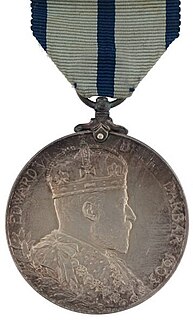
Delhi Durbar Medals were instituted by the United Kingdom to commemorate the Delhi Durbar where the new Emperor of India was proclaimed, in 1903 for Edward VII, and in 1911 for George V. On both occasions the medals were one and a half inches in diameter and were awarded in both gold and silver. They were worn in date order alongside Coronation and Jubilee medals on the left chest, suspended from a ribbon one and a quarter inches wide. These Royal commemorative medals were worn before campaign medals until November 1918, after which the order of wear was changed, with them now worn after campaign medals and before long service awards.

The Police Coronation Medal was sanctioned in 1911 as an award to policemen, members of ambulance units, firemen and Royal Parks' staff on duty during the official celebrations of the coronation of King George V that took place during 1911.

The Police Coronation Medal was sanctioned in 1902 as an award to policeman, firemen and members of ambulance units on duty during the official celebrations of the Coronation of King Edward VII and Queen Alexandra on 9 August 1902.

A Police Jubilee Medal was awarded to those on duty at Queen Victoria's Golden and Diamond Jubilee celebrations.
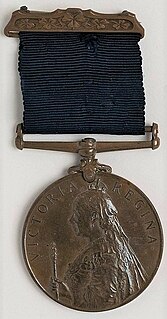
Queen Victoria's Commemoration Medal 1900 (Ireland), more commonly referred to as the Visit to Ireland Medal 1900, was awarded to those members of the Irish Police Forces on duty at Queen Victoria’s various engagements during her visit to Ireland in 1900.
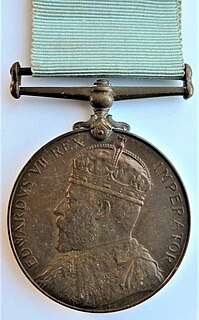
King Edward VII’s Visit Commemoration Medal 1903 (Ireland), more commonly referred to as the Visit to Ireland Medal 1903, was awarded to those members of the Irish Police Forces on duty during the various engagements of King Edward VII’s visit to Ireland in 1903. A total of 7,756 medals were awarded.

Delhi Durbar Medals were instituted by the United Kingdom to commemorate the Delhi Durbar where the new Emperor of India was proclaimed, in 1903 for Edward VII, and in 1911 for George V. On both occasions the medals were one and a half inches in diameter and were awarded in both gold and silver. They were worn in date order alongside Coronation and Jubilee medals on the left chest, suspended from a ribbon one and a quarter inches wide. These Royal commemorative medals were worn before campaign medals until November 1918, after which the order of wear was changed, with them now worn after campaign medals and before long service awards.
















